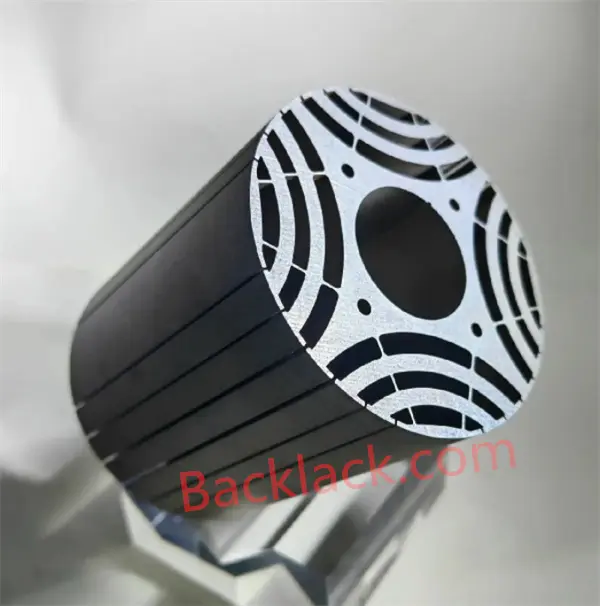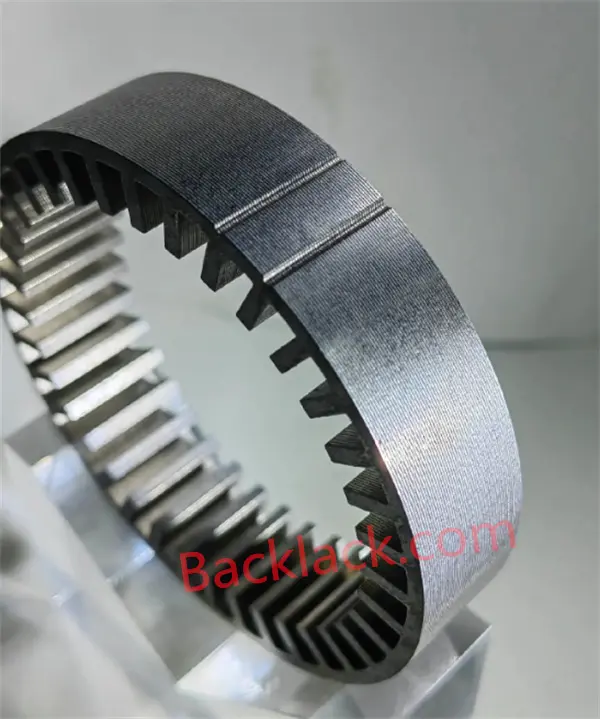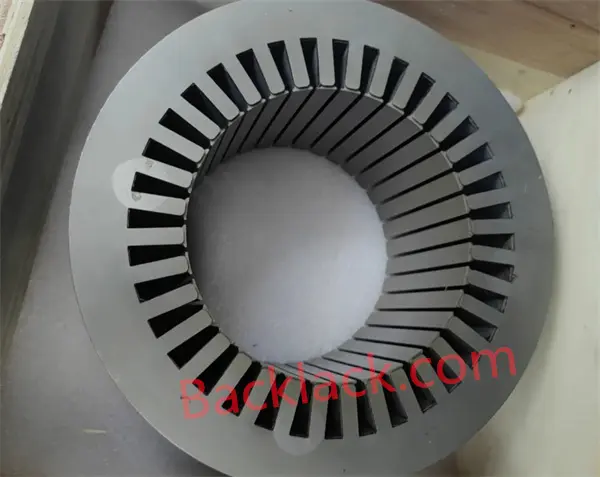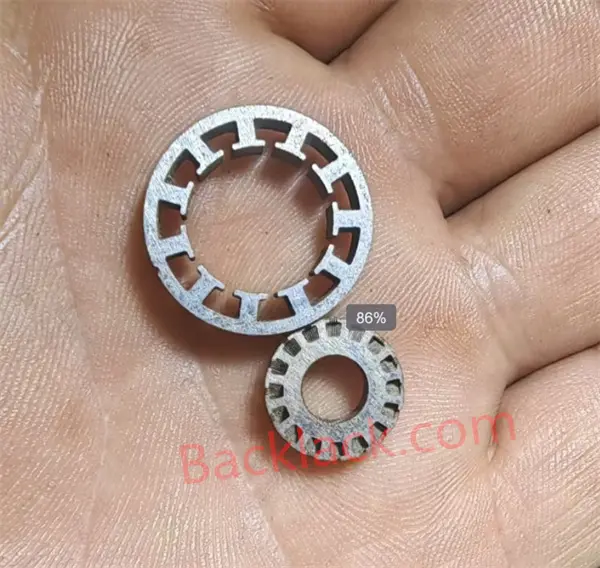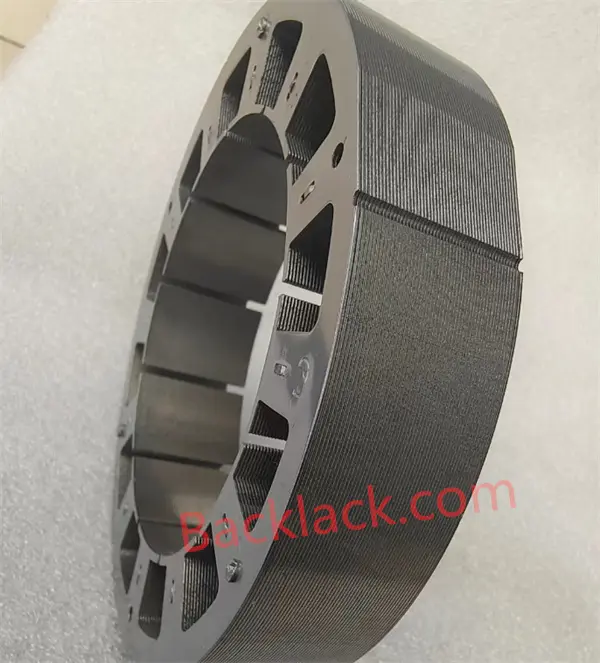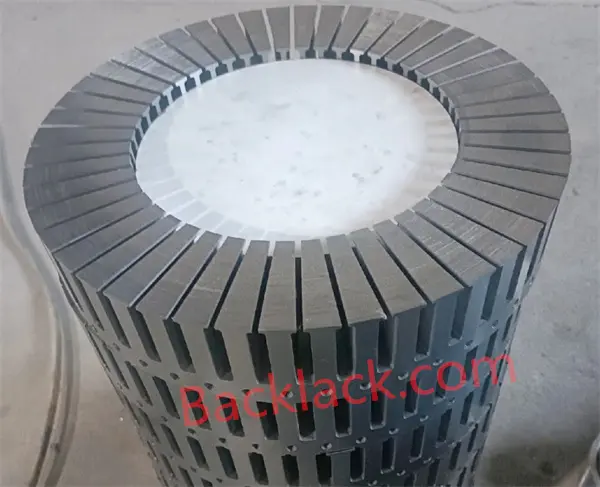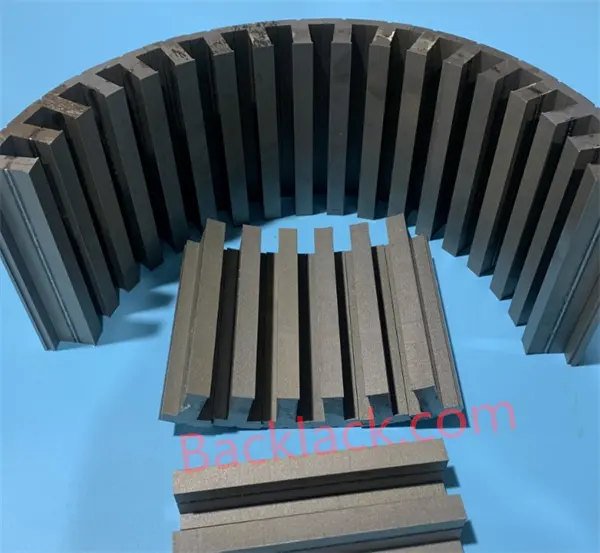A permanent magnet synchronous motor uses permanent magnets embedded in the rotor to create a constant magnetic field, eliminating the need for brushes or slip rings. This design leads to higher efficiency, reduced heat generation, and lower maintenance. We specialize in manufacturing high-quality permanent magnet synchronous motor lamination, offering custom stator and rotor core solutions for various applications.
Customize PMS Motor Stator And Rotor Products
PMSMs are renowned for their precise speed control, high power density, and excellent performance across a wide range of applications. They are widely used in new energy vehicles, industrial automation, robotics, and renewable energy systems due to their reliability, compact size, and energy-saving capabilities.
We specialize in custom manufacturing of Permanent Magnet Synchronous Motor (PMSM) stators and rotors, offering rapid prototyping through laser cutting and wire cutting. Our capabilities include producing medium to large stator and rotor cores, ensuring suitability for various PMSM applications.
We source materials from top Chinese silicon steel suppliers, such as JFE, Baosteel, WISCO, and Shougang. Thickness 0.1MM/0.2MM(including JFE SuperCore 10JNEX900), etc. For stacking stators and rotors, we offer multiple options, including interlocking, welding, self-bonding, cleating, and riveting. Our commitment is to provide high-quality, reliable, and cost-effective custom solutions to support your PMSM projects.
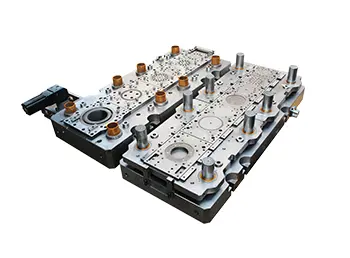
Compound Stamping And Progressive Stamping For PMS Motor Lamination
We provide two stamping methods for PMSM stator cores and rotor cores.
Compound stamping is a method where all cutting and forming operations are completed in a single press stroke. This technique ensures high precision and consistency, making it ideal for producing complex PMSM stator and rotor laminations. It is particularly suitable for small to medium production runs where intricate shapes and tight tolerances are required.
Progressive stamping involves a series of sequential operations performed at different stages of a continuous strip of material. Each station in the press performs a specific operation, gradually forming the final part. This method is highly efficient for large-scale production, offering excellent material utilization and lower unit costs.
FAQS
What Are The Key Features Of Permanent Magnet Synchronous Motors?
High Efficiency
Optimized design for maximum energy conversion.
Precise Control
Synchronizes rotor speed with supply current frequency.
Durable Construction
Robust build for long-lasting performance.
Compact Design
Space-saving, ideal for various applications.
Quiet Operation
Minimal noise during operation.
High Torque Density
Delivers strong performance in a small footprint.
Temperature Management
Efficient cooling systems prevent overheating.
Versatile Applications
Suitable for industrial, automotive, and consumer uses.
Environmentally Friendly
Energy-efficient, reducing carbon footprint.
What Is The Difference Between PMS VS BLDC Motor?
AC air conditioning compressors typically use single-phase induction motors or three-phase induction motors. These motors are favored for their reliability, efficiency, and ability to provide the necessary torque to drive the compressor, ensuring effective cooling performance in residential and commercial air conditioning systems.
What Are The Primary Benefits Of Self-Bonding Technology In Motor Lamination Stacks?
Self-bonding technology in motor lamination stacks offers enhanced efficiency, reduced noise and vibration, and improved thermal management. This technology enables more compact motor designs, crucial for space-sensitive applications. It also ensures higher precision and uniformity in the motor core, leading to better performance and longevity of electric motors.
What Materials Are Commonly Used In Self-Bonding Motor Laminations?
The most commonly used materials in self-bonding motor laminations are silicon steel and nickel-iron alloys. These materials are chosen for their excellent magnetic properties, which are crucial for efficient motor operation. Silicon steel, also electrical steel, in particular, is favored for its low core loss and high permeability, making it ideal for high-efficiency electric motors.
Transform Your Business with Our Leading Permanent Magnet Synchronous Motor Lamination Solutions in China - Act Now!
We have achieved a stator and rotor stacking factor greater than 0.97 and a product qualification rate of 0.98. Our services include providing material reports and quality inspection reports, as well as using advanced testing equipment such as CMM and projectors. Contact us to customize motor stator and rotor laminations for your permanent magnet synchronous motor needs.
You might also be interested in
